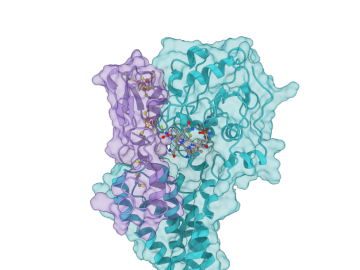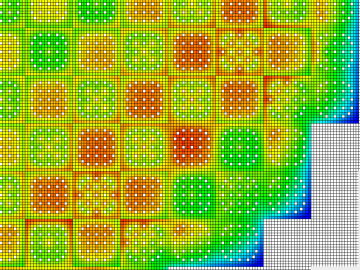
Filter News
Area of Research
- Advanced Manufacturing (5)
- Biology and Environment (26)
- Building Technologies (1)
- Computational Biology (1)
- Computational Engineering (2)
- Computer Science (13)
- Electricity and Smart Grid (3)
- Energy Science (107)
- Functional Materials for Energy (1)
- Fusion and Fission (9)
- Fusion Energy (7)
- Isotopes (23)
- Materials (63)
- Materials for Computing (13)
- Mathematics (1)
- National Security (26)
- Neutron Science (19)
- Nuclear Science and Technology (17)
- Nuclear Systems Modeling, Simulation and Validation (1)
- Quantum information Science (5)
- Sensors and Controls (1)
- Supercomputing (75)
- Transportation Systems (2)
News Type
News Topics
- (-) Advanced Reactors (30)
- (-) Composites (25)
- (-) Computer Science (169)
- (-) Cybersecurity (23)
- (-) Grid (57)
- (-) Isotopes (46)
- (-) Physics (44)
- (-) Polymers (23)
- (-) Space Exploration (24)
- (-) Transportation (77)
- 3-D Printing/Advanced Manufacturing (106)
- Artificial Intelligence (100)
- Big Data (66)
- Bioenergy (90)
- Biology (106)
- Biomedical (57)
- Biotechnology (28)
- Buildings (57)
- Chemical Sciences (59)
- Clean Water (30)
- Coronavirus (34)
- Critical Materials (18)
- Education (2)
- Emergency (4)
- Energy Storage (79)
- Environment (178)
- Exascale Computing (54)
- Fossil Energy (7)
- Frontier (48)
- Fusion (56)
- High-Performance Computing (104)
- Hydropower (12)
- Irradiation (3)
- ITER (8)
- Machine Learning (53)
- Materials (118)
- Materials Science (109)
- Mathematics (11)
- Mercury (10)
- Microelectronics (3)
- Microscopy (42)
- Molten Salt (8)
- Nanotechnology (41)
- National Security (70)
- Neutron Science (122)
- Nuclear Energy (98)
- Partnerships (43)
- Quantum Computing (41)
- Quantum Science (63)
- Security (20)
- Simulation (55)
- Software (1)
- Statistics (3)
- Summit (50)
Media Contacts

Kübra Yeter-Aydeniz, a postdoctoral researcher, was recently named the Turkish Women in Science group’s “Scientist of the Week.”

Radioactive isotopes power some of NASA’s best-known spacecraft. But predicting how radiation emitted from these isotopes might affect nearby materials is tricky

A developing method to gauge the occurrence of a nuclear reactor anomaly has the potential to save millions of dollars.

Oak Ridge National Laboratory scientists have discovered a cost-effective way to significantly improve the mechanical performance of common polymer nanocomposite materials.

Two staff members at the Department of Energy’s Oak Ridge National Laboratory have received prestigious HENAAC and Luminary Awards from Great Minds in STEM, a nonprofit organization that focuses on promoting STEM careers in underserved

The Department of Energy has selected Oak Ridge National Laboratory to lead a collaboration charged with developing quantum technologies that will usher in a new era of innovation.

A team led by ORNL created a computational model of the proteins responsible for the transformation of mercury to toxic methylmercury, marking a step forward in understanding how the reaction occurs and how mercury cycles through the environment.

As CASL ends and transitions to VERA Users Group, ORNL looks at the history of the program and its impact on the nuclear industry.

Oak Ridge National Laboratory researchers have developed a machine learning model that could help predict the impact pandemics such as COVID-19 have on fuel demand in the United States.

Combining expertise in physics, applied math and computing, Oak Ridge National Laboratory scientists are expanding the possibilities for simulating electromagnetic fields that underpin phenomena in materials design and telecommunications.


